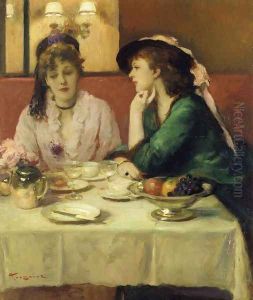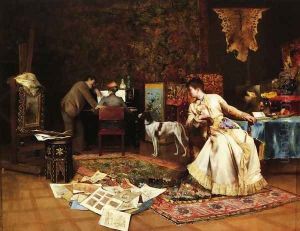Armand (Francois-Christophe) Toussaint Paintings
Armand (François-Christophe) Toussaint was a French sculptor born in 1806 in Paris. He was a prominent figure in the Parisian art scene during the 19th century, recognized for his classical style and his contributions to public works as well as private commissions.
Toussaint studied at the École des Beaux-Arts in Paris, which was the foremost art institution in France. He was a pupil of the renowned sculptor Pierre Jean David d'Angers, who was known for his romantic and neoclassical sculptures. Under David's tutelage, Toussaint honed his skills and developed a style that combined classical grace with a romantic expressiveness.
Throughout his career, Toussaint produced a number of notable works, including statues, busts, and reliefs. He often drew inspiration from mythology, history, and literature, which was common among artists of the neoclassical movement. His sculptures were characterized by their refined elegance and attention to detail, which earned him both public and critical acclaim.
Toussaint exhibited his work at the Paris Salon, the official art exhibition of the Académie des Beaux-Arts in Paris. His contributions to the Salon helped to establish his reputation as a talented sculptor. He was also involved in the creation of public monuments, which were popular during his time as a means of commemorating historical figures and events.
In addition to his public works, Toussaint also received private commissions from wealthy patrons who sought his skills for portrait busts and decorative sculptures. These works further showcased his ability to capture the likeness and personality of his subjects, making him a sought-after artist among the elite of society.
Armand Toussaint's legacy as a sculptor is marked by the quality and craftsmanship of his work. His pieces can still be seen in museums, galleries, and public spaces, serving as a testament to his skill and artistry. Toussaint passed away in 1862, leaving behind a body of work that continues to be appreciated for its contribution to French sculpture and the neoclassical tradition.

